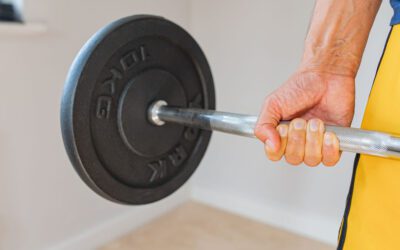In the last blog (click here) we looked at how the two main measures of aerobic fitness, namely maximal aerobic fitness and long duration aerobic fitness, can be trained. In this article, we will explore exactly how these methods of aerobic training change the body’s aerobic energy systems.
Repeated sessions of running, cycling, swimming and other aerobic activities will result in several favourable adaptations in cardiovascular and respiratory function, and fat metabolism. These changes can take several weeks and months to develop and will be reversed when a person stops training.
These adaptations can be grouped into one of two categories:
- The ability of the heart to pump oxygenated blood.
- The ability of the muscles to extract oxygen from the blood.

The ability of the heart to pump oxygenated blood
These adaptations could be referred to as central adaptations, as they relate to changes in heart and lung function.
Heart rate
Prolonged aerobic training has been shown to decrease resting heart rate. The combination of all of the other adaptations listed below results in a more efficient, oxygen delivery system, meaning that the heart does not have to beat as quickly when someone is aerobically trained in order to deliver the same amount of oxygen to the muscles.
Contractility
The heart muscle becomes more elastic, making it more effective and efficient in pumping the blood.
Stroke volume
The stroke volume is the amount of blood pumped out of the heart per beat. Aerobic training can result in an increase in stroke volume, meaning that cardiac output (the amount of blood pumped around the body per minute) will increase for the same number of heartbeats.
Lung ventilation
There are several related improvements in lung function, which help with the delivery of oxygen to the muscles. These include; increased lung capacity and volume, increase in the size, strength and efficiency of respiratory muscles, an increase in the size and number of alveoli, and increased capillarisation to the lungs.
Blood volume
Aerobic training results in an increase in blood volume, which improves the speed and efficiency of oxygen transportation.

The ability of the muscles to extract oxygen from the blood
Number of muscle capillaries
The number of capillaries taking blood into muscles during exercise and rest increases with aerobic training.
Vasodilation in muscles
When the demand for oxygen in muscles increases, the blood vessels in those muscles will dilate to help increase blood flow. This vasodilation is more pronounced in people who are more aerobically trained than in those who are not.
Muscle blood flow
The blood flow in muscles is higher in individuals who are more aerobically trained.
Number of mitochondria
The mitochondria are known as the powerhouses of the cells. They are the sites where fuels such as carbohydrates and fats are broken down to release energy to power muscle contraction. Aerobic training results in an increased concentration of mitochondria.
Concentration of aerobic enzymes
Aerobic enzymes, the enzymes which break down fats and carbohydrates in the presence of oxygen, are more concentrated following periods of aerobic training.
Haemoglobin concentration
Haemoglobin is the protein in the red blood cells that is responsible for the delivery of oxygen to the tissues. Its concentration is increased by aerobic training.
Myoglobin concentration
Myoglobin is a protein which acts in the muscle itself to transport oxygen effectively. Like haemoglobin, the concentration of myoglobin is also improved by aerobic training.
Blood volume
Aerobic training results in an increase in blood volume, which improves the speed and efficiency of oxygen transportation.
Red blood cell volume
Oxygen is attached to red blood cells when it is being transported around the cardiovascular system. Aerobic training results in an increase in the number of red blood cells and therefore the effectiveness of oxygen transportation to the muscles.
Oxygen extraction
Often known as the arteriovenous oxygen difference, this is a measure of the efficiency of oxygen delivery from the blood to the tissues. It expands (becomes more efficient), during exercise as the oxygen demand from the muscles increases, and has been shown to be more effective in people who are aerobically trained than in people who are not.
Vasoconstriction in non-active tissues
When we warm up for a bout of aerobic exercise The blood vessels in our muscles dilate (see above), and at the same time blood vessels in non-active tissues begin to constrict. This has the effect of distributing a higher proportion of the blood volume to the muscles during exercise and is known as the blood shunt. The effectiveness of this blood shunt is improved with aerobic training.
Summary
When we exercise, we apply stresses to the body’s systems. In response, the body adapts to the stresses so that it can cope more effectively with them the next time around.
In terms of aerobic training, we can see that our physiological systems are fine tuned to action multiple adaptations both centrally, in the cardiorespiratory system, and peripherally in the blood vessels and muscles.
If you want to improve your fitness and overall health with a personal trainer who has a comprehensive understanding of how the body adapts to exercise, please get in touch to schedule your free health consultation call. Click here to go to the contact page. And click here for a full explanation of my personal training services, including FAQs.





